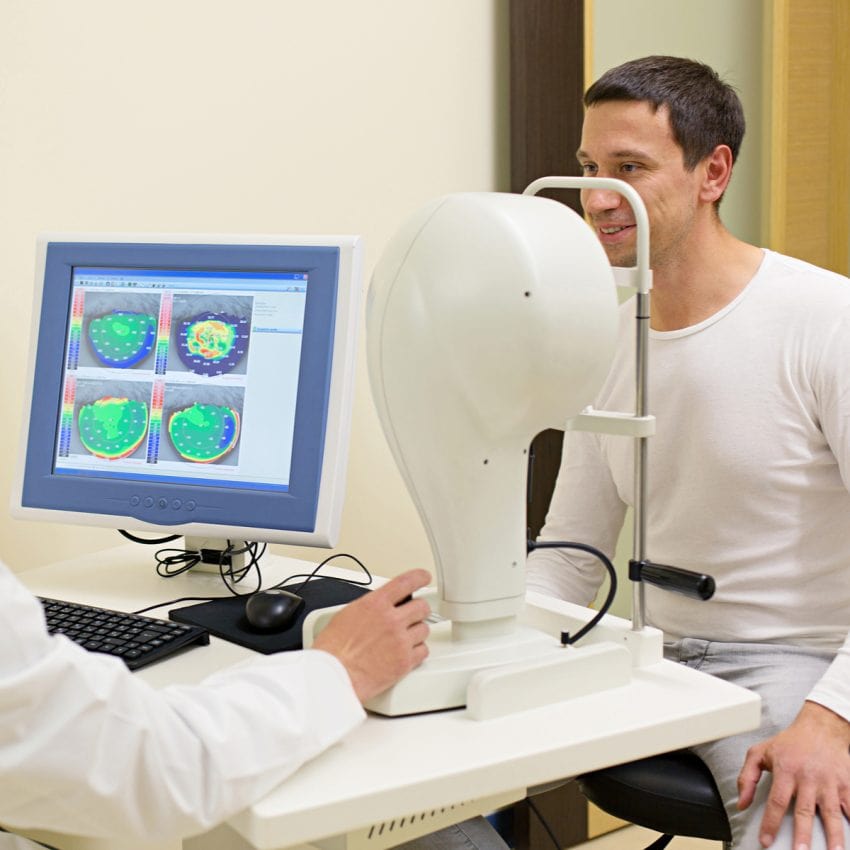Keratoconus treatment – What is Corneal Crosslinking?
When it comes to your eye health, you want to put your vision in the hands of highly-trained professionals that you can trust. Technical skills are an important factor when it comes to deciding who to work with, but you also need to consider working with doctors who champion communication and individually-focused care. This ensures that you’ll have peace of mind knowing that you are still in control of your treatment.
Dr. Oday Alsheikh is an industry-recognized authority in eye surgery and advanced, corrective ophthalmology procedures. Dr. Alsheikh and his clinic offer a range of treatments to restore visual acuity and responsiveness at Braverman-Terry-OEI Eye Associates in San Antonio, Texas. One of the common conditions that he works with is known as keratoconus.
What is Keratoconus?
Keratoconus is a non-inflammatory eye disorder that leads to deformities in the cornea. It creates a characteristic bulge and thinning. These changes mean that vision gets distorted and blurry, and patients experience greater sensitivity to light. Keratoconus is progressive and can affect both eyes at different rates. It usually starts during the patient’s teens or early 20s. The loss of visual ability with this disorder can be severe.
The cornea consists of collagen fibers stacked in layers. Keratoconus is a weak spot within the fibers. In the past, there has been no clear way to strengthen the existing structure. Corneal transplants have been the ultimate option for many patients.
The causes of this condition seem to include a genetic predisposition as well as the following:
- Weakening due to refractive eye surgery
- Excessive rubbing of the eye
- Overexposure to UV rays
- Badly fitted contact lenses.
What is Crosslinking?
Corneal crosslinking is a modern corneal scar treatment that can slow the progress of keratoconus. It involves creating new links between the collagen fibers as well as making them thicker and shorter. This leads to a strengthening of the structure of the cornea.
Riboflavin 5’-phosphate is the key to this procedure. It is applied to the appropriate area of the eye and then activated using UV light. This creates a stiffening effect that defines effective keratoconus treatment.
The benefits of crosslinking over other treatments are that it is fast and non-invasive. It produces successful results with a low risk of post-procedure infection. There is no discomfort during the procedure as anaesthetic eye drops are applied before treatment. The process takes less than an hour to complete.
The after effects of crosslinking vary depending on the type of procedure. In any case, they are mild and short-lived. The eye doctors at Braverman-Terry-OEI Eye Associates will go over these in detail with you before you decide to move forward with a procedure.
If you have issues following refractive surgery (corneal ectasia) or a diagnosis of keratoconus, you may be a suitable candidate for this procedure. You need to be over 14 years of age.
Ask the Experts
Deciding on a course of corrective vision treatment is a matter of weighing up clinical and personal circumstances. Receiving supportive care from expert eye surgeons like Dr. Oday Alsheikh in San Antonio, Texas, will help guide you through the possible treatment options.
Get in touch for expert advice and to book your consultation online with Dr Oday Alsheikh in San Antonio, Texas by clicking here or alternatively, call us directly on 210-600-004
 San Antonio, TX
San Antonio, TX


